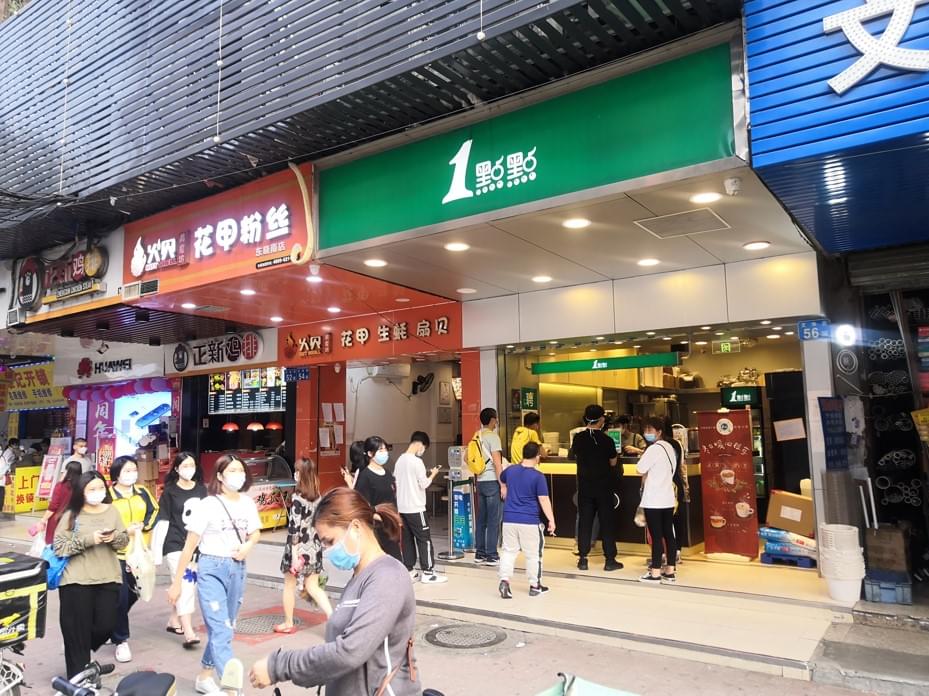Stores Prepare To Reopen In Post-Virus China
Chinese who are hungry for shopping are now fevered by the reopening of shops – restaurants, luxury stores, shopping malls. The viral situation forced increased “revenge spending” or “consumption hunger” after restraint to take shape in serpentine lines in front of reopening stores. The same wave is predicted by experts for the second half of 2020 in Europe and North America.

New phases, new concepts
The FMCG industry enters three phases in relation to the coronavirus, according to an analysis by Good Rebels. First, everyone is shocked, silent, offering their communication resources to manage the crisis caused by the virus. In the second stage, resuscitation and reactivation begins. Brands need to build credibility, commitment and relationships, especially in digital media. Finally comes the age of “Revenge Spending”. Brands will revive communications and media to lead with intelligence and creativity a social movement that will be generated by a new “hunger for consumption”. The digital solutions practiced in the previous phase, which were loved by the network-dependent consumer, the “netizen,” are retained. The KOL and KOC infuencers will affect them too, in the spirit of O2O marketing.
Go virtual, go social
The worst has passed in China, and the urge to shop there is returning. But, in the meantime, stores have had to completely restructure how they market and sell their products because of the pandemic.
As opposed to just reopening their physical stores, many commercial centers hope to boost consumption by creating new forms of shopping like online livestreaming sales, KOC virtual “try-on” videos, and virtual reality (VR) shopping. Even in the country with the world’s most advanced e-commerce systems, plenty of stores had to quickly adjust their ideas about e-commerce in order to stay afloat during China’s battle against the coronavirus.
Key Opinion Leaders — better known as KOLs — have long been used by luxury brands in China to promote products and influence sales. However, in an ever-changing consumer climate, experts are now claiming that a new form of influencer may be even more beneficial for building a brand’s image. Introducing, the KOCs, China’s Key Opinion Consumers.
Until recently, the title of “influencer” in China was attributed only to celebrities in their own right — singers, actors, and industry professionals who advertise products. However, celebrity influencers have fallen out of favor with many Chinese netizens, who are now hyper-aware of the stars’ lucrative brand deals. Enter, the KOCs. They are everyday consumers, whose value is based on their relatability, and trustworthy nature. The entire focus of KOCs is on product reviews, yet often, they only have a few hundred followers on their accounts. For millennial Chinese consumers, this personable, friend-like appeal can have a powerful impact on purchasing decisions. the brand hopes to gather free exposure from KOC reviews and arrange future KOC paid campaigns with those that worked well. Finally, brands should look to formalize KOC partnerships with bigger post-campaign marketing. This low-risk high-reward technique means that brands are only paying out for the product and shipping costs, whilst testing the waters for what could be a lucrative marketing strategy.
Overall, most stores choose to either enter a known sales platform or rely on their own customer networks to curb losses. Big e-commerce platforms like Tmall and JD.com have a certain type of traffic, so a lot of brands promptly built e-stores and campaigns that paired well with those audiences. But stores also chose to build up their own traffic by investing in customer relations during the outbreak via O2O transactions.
O2O – online to offline marketing
For a quick definition, one might say o2o is anything digital which brings people to shop offline, in real-world stores.The first one is about is the sheer number of people connected on mobile, on mobile internet, and, even more, on powerful mobile internet.Technology matters too. QR Codes got a recent new validation in China. Voice-based apps are another feature which can increase the level of trust and service online before a purchase offline. Mobile payments, then, are a third and ultimate level of this o2o rocket.
Beyond pure tech, it’s also a matter of convenience, with the rise of local m-commerce. In sprawling, congested cities where you’re happy to spare a few hours just shopping for basic stuff.
Startups like Dmall offer an amazingly clever o2o service as they turn nearby supermarkets in inventory warehouses you can browse from your phone, order, and get delivered in 1h in a 2km radius.
Related news
Related news
Fidelity Kitekintés 2026: Ne becsüljük alá az inflációt!
🎧 Hallgasd a cikket: Lejátszás Szünet Folytatás Leállítás Nyelv: Auto…
Read more >Company Trend 2025 – domestic businesses under strong pressure, in a negative trend
🎧 Hallgasd a cikket: Lejátszás Szünet Folytatás Leállítás Nyelv: Auto…
Read more >Plastic packaging waste in the EU: 35.3kg/capita
🎧 Hallgasd a cikket: Lejátszás Szünet Folytatás Leállítás Nyelv: Auto…
Read more >




